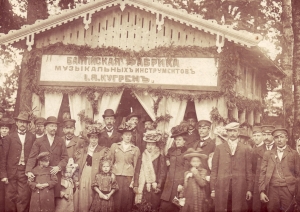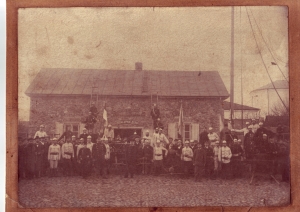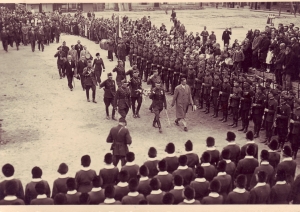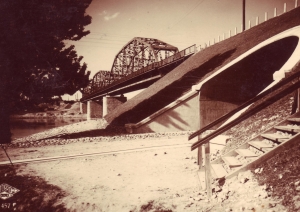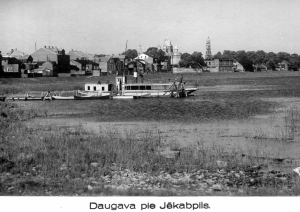Jēkabpils has always been the crossroads of Zemgale, Latgale, Vidzeme as well as Sēlija regions. Only the river Daugava has remained unchanged since the old times – the River of Fate of our ancestors, waving 93 km through the city and district.
Jēkabpils was established at the beginning of the 17th century as a settlement of the Old Believers persecuted in Russia, so-called sloboda, on the left coast of the Daugava at Sala’s inn. Development of the city was facilitated by the barge route on the river. The barge haulers were forced to load their cargo into wagons as barges could not travel further due to Daugava’s falls. In 1670 the Sala’s inn settlement was granted the status of a city and renamed Jēkabpils (Jakobstadt) to honour its founder Jacob, the duke of Kurzeme.
The oldest record mentioning Krustpils is dated 1237 when Riga’s bishop Nicholas de Magdeburg built a Kreutzburg castle. In 1585 Stefan Batory, the king of Poland, granted Krustpils to Nicholas Korf. The only successor of the castle owners Jutta von Korf from Germany regularly maintains contacts with the present owners of the castle and visits the Krustpils castle.
The existing borders of the city were established in 1962 when the neighbouring city Krustpils merged with Jēkabpils.
The city is famous for the Krustpils castle - Jēkabpils History museum also including a Soviet Army room, cellars of the medieval castle, exhibitions in the tower, outdoor section of Jēkabpils History museum “Selian farm“ – a Selian 19th century farm where the tourists have a possibility to participate in the old days’ household and craftsmen’s works. Wood park at Radži basin with a place for swimming, volleyball fields and a jogging path, churches of 7 denominations, including churches of the Holy Spirit and Nicholas with a monastery, art gallery MANS`S, protection dam along the left coast of the Dauava – barrier against flood and a place for walking. In Jēkabpils you will notice the typical 19th century one-storey wooden houses and late 19th century and early 20th century red brick houses with the luxurious decorated facades of profiled details. Jēkabpils is famous also with UNESCO world heritage list object - in the Struve park there is a station point of Struve Geodetic Arc that was measured from 1816 till 1855 and stretches through 10 countries.
Jēkabpils is a city with 123 protected history, culture, art and city building artefacts.
Jēkabpils is a city in development. Businesses expand, educational establishments, culture and sports facilities are improved, recreation facilities established, streets, squares and plazas reconstructed. Supermarket chains and bank experts have recognized Jēkabpils as convenient business environment.
Jēkabpils is a city where people, their needs and interests are a priority.
Jēkabpils is a city of good changes.
Welcome to Jēkabpils!




